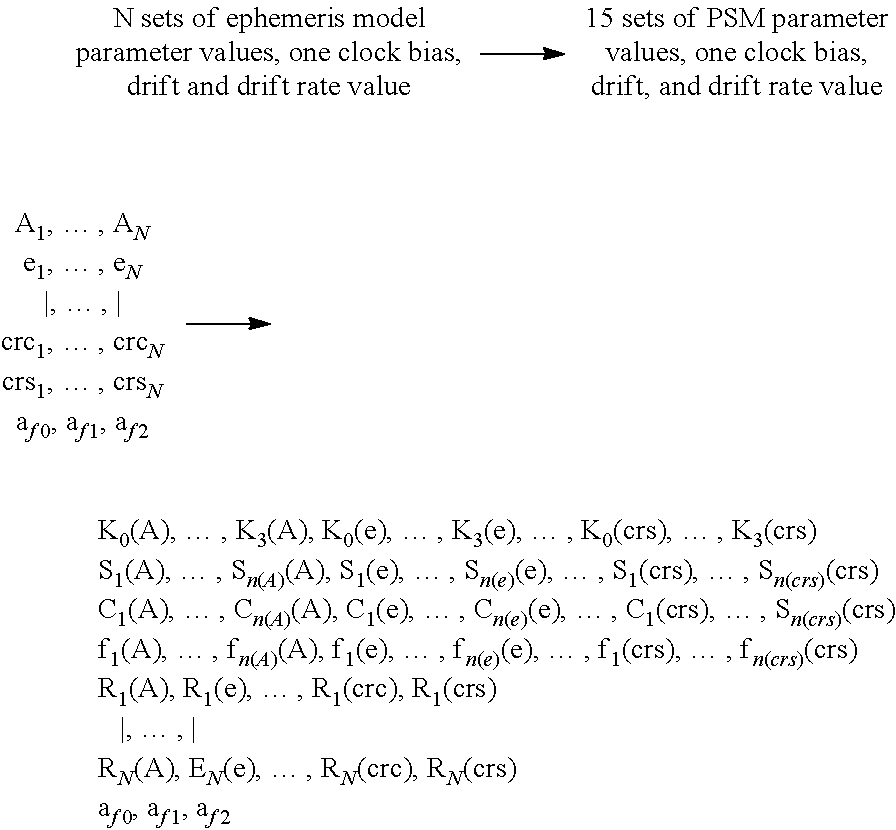Methods for Encoding and Recovering GNSS Ephemeris For Over-The-Air Transmission
a technology of gnss ephemeris and over-the-air transmission, which is applied in the field of encoding and recovering gnss ephemeris for over-the-air transmission, can solve the problem of not incorporating the use of sinusoidal terms to capture the parameters' long-term behavior
- Summary
- Abstract
- Description
- Claims
- Application Information
AI Technical Summary
Benefits of technology
Problems solved by technology
Method used
Image
Examples
example 2
High Precision and Low Bandwidth Requirements
[0129]This example was actually implemented on a computer and illustrates an embodiment of the invention which produces a high precision result and nevertheless releases substantial bandwidth savings. The bandwidth requirements in this particular example can be sketched as follows:
[0130]A conventional ICD-200GPS 4-hour ephemeris takes around 45 bytes to encode. Thus it would take 7*6*45(bytes / ephemeris)−1890 Bytes (it takes 6 ephemerides to tile one day) to encode 7 days of prediction data.
[0131]However, with 6-hour ephemeris models encoded according to the techniques described herein, it is possible to encode 7 days of prediction data (including clock data) in less than one kilobyte (1024 bytes):
[0132]For this example the period of time T is 7 days, N=28 intervals, V=6 hours, and M=15 parameters.
[0133]Using around 15 bytes to express the parameters of each PSM model and about 28 bytes to express the remainder quantities for each 6 hour f...
PUM
 Login to View More
Login to View More Abstract
Description
Claims
Application Information
 Login to View More
Login to View More - R&D
- Intellectual Property
- Life Sciences
- Materials
- Tech Scout
- Unparalleled Data Quality
- Higher Quality Content
- 60% Fewer Hallucinations
Browse by: Latest US Patents, China's latest patents, Technical Efficacy Thesaurus, Application Domain, Technology Topic, Popular Technical Reports.
© 2025 PatSnap. All rights reserved.Legal|Privacy policy|Modern Slavery Act Transparency Statement|Sitemap|About US| Contact US: help@patsnap.com



